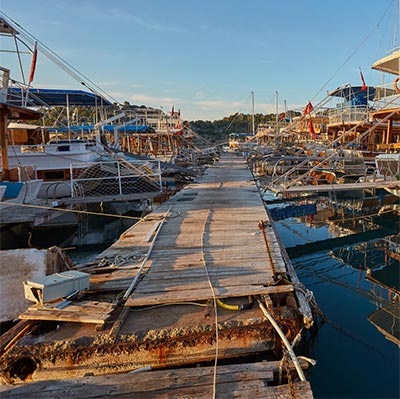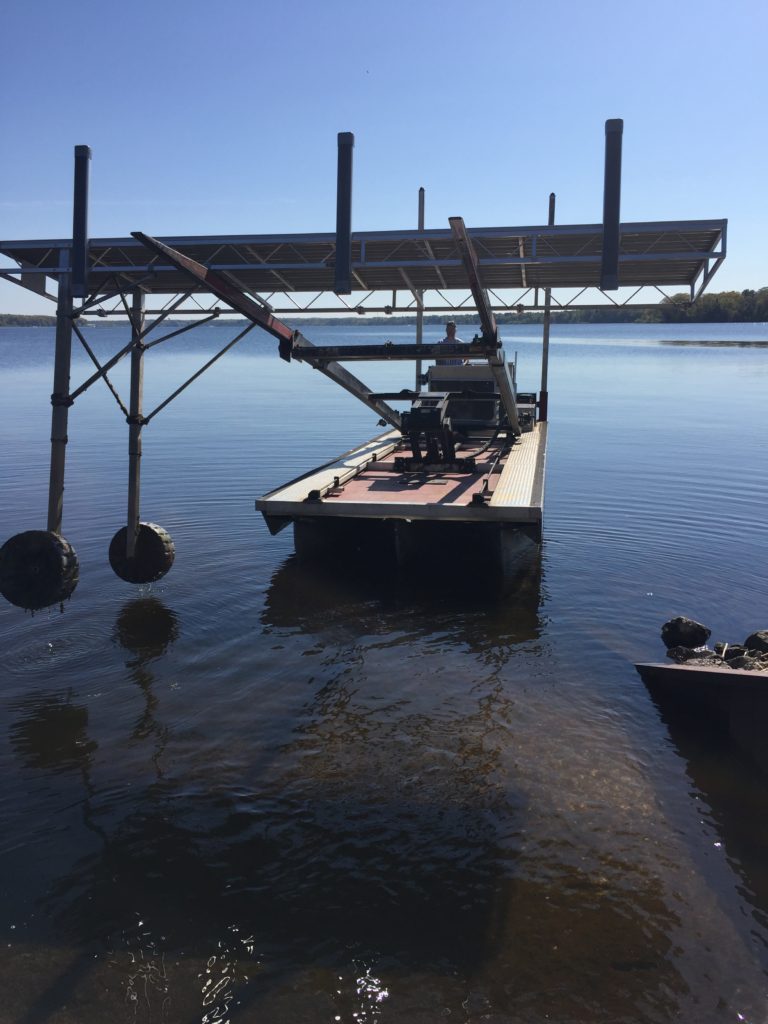Just How to Address Common Dock Repair Issues for Safe Water Tasks

Identifying Common Dock Issues
Identifying common dock problems is essential for preserving the performance and safety of your beachfront property. Normal assessments can assist discover problems before they end up being extreme, making sure both the long life of the dock and the safety and security of those who use it.
One more typical problem is the destruction of flotation gadgets. These gadgets are important for keeping the dock buoyant, and any kind of damages or slits can trigger the dock to list or sink. Regularly looking for leakages or water logged drifts can preempt extra significant issues.
Furthermore, algae and barnacle buildup on the dock's surface area can create hazardous and slippery problems. This biofouling not just poses a risk to individuals but can likewise speed up the damage of the dock materials.
Finally, checking for indicators of corrosion on steel components is crucial. Rust can jeopardize the stability of the dock's structure, making it harmful. By routinely determining these typical dock concerns, you can ensure that your dock stays practical and secure for many years ahead.
Repairing Rotting Timber
When dealing with the problem of rotting timber on your dock, it is essential to act swiftly to avoid additional wear and tear. Begin by extensively evaluating the whole framework to recognize all influenced areas. Use a screwdriver to probe the wood; if it sinks in easily, the timber is most likely decomposed and needs immediate interest.
As soon as identified, get rid of the decayed areas utilizing a saw or carve. Be sure to reduce to healthy, strong timber, ensuring you get rid of all jeopardized material. After removal, treat the remaining timber with a timber preservative to stop future rot. This treatment will certainly aid safeguard versus moisture, which is the primary reason for wood degeneration.
Next, replace the removed sections with marine-grade lumber or pressure-treated wood, which are more resistant to water damage. Safeguard the brand-new pieces with galvanized or stainless-steel fasteners to stop rust. Furthermore, applying a water-proof sealant to the brand-new wood can give an extra layer of protection.
Safeguarding Loose Boards
Exactly how do you guarantee your dock remains risk-free and practical for all its individuals? One critical element is safeguarding loosened boards, which can or else position considerable threats. Loose boards not only boost the risk of tripping yet can also jeopardize the architectural honesty of the entire dock.

For reinstallation, utilize galvanized or stainless steel screws, as these materials supply remarkable resistance to rust in marine environments. Make certain the screws are long enough to penetrate deep right into the underlying assistance structure, yet not as long that they protrude via the dock's surface area. Pre-drilling pilot holes can aid his response avoid the wood from splitting.
Last but not least, preserve a regular inspection timetable to determine and address any kind of new issues without delay. By protecting loose boards effectively, you add to the general safety and durability of your dock, making it a reliable system for water activities.
Maintaining Unsteady Pilings
Making certain the security of unsteady pilings is critical to preserving a practical and secure dock. Use a level to examine for upright alignment and ensure they are driven deep sufficient right into the substrate to offer ample assistance.
If the pilings are located to be unstable, one efficient technique for support is the usage of additional bracing. Cross-bracing with treated lumber or galvanized metal can significantly improve stability. Anchor the braces safely to both the pilings and the dock framework to distribute tons uniformly.

Regular upkeep and regular review of the pilings' security are important to guaranteeing long-lasting dock safety and capability.
Replacing Rusty Equipment
Attending to unstable pilings is simply one element of maintaining a dock's stability; another essential worry is replacing rustic equipment. Gradually, exposure to wetness and salt can cause the oxidation and rust of screws, brackets, and screws, compromising the entire framework's safety. Routine inspection for rust is crucial, particularly after extreme weather or seasonal modifications.
When corroded equipment is identified, instant activity is required. Begin by selecting marine-grade stainless-steel or galvanized equipment, both designed to withstand the rough aquatic atmosphere. Make certain that you have the appropriate tools, such as screwdrivers and wrenches, to securely remove the old, rusty items without causing more damage to the dock.
After eliminating the rustic equipment, thoroughly clean the influenced areas to get rid of any type of recurring corrosion or particles. Apply a rust-inhibiting primer to revealed metal surfaces prior to installing the new equipment. Tighten up all fixtures safely to avoid future helping to loosen, and periodically evaluate the fittings to make certain ongoing security.
Changing rustic hardware not just expands the dock's life-span however likewise substantially improves the safety of water tasks. By proactively managing deterioration, you shield both the framework and its customers, ensuring a delightful and protected waterfront experience.
Conclusion
Regular view it evaluations and maintenance are important to resolve usual dock fixing problems and guarantee risk-free water activities. By determining and treating problems such as decomposing wood, loosened boards, unsteady pilings, and rusty hardware, architectural stability and longevity can be substantially boosted. The application of proper treatments and marine-grade materials better fortifies the dock against environmental stress factors. Such positive steps add to the general security and functionality of dock frameworks, cultivating a safe and secure setting for water-based activities.
Making certain the security of water tasks hinges considerably click on the correct upkeep and repair service of docks (Dock Repairs). These tools are necessary for keeping the dock buoyant, and any kind of damages or slits can create the dock to list or sink. By routinely determining these common dock concerns, you can make certain that your dock remains safe and useful for years to come
Guaranteeing the stability of unsteady pilings is critical to maintaining a risk-free and functional dock.Regular evaluations and upkeep are vital to resolve typical dock repair work concerns and guarantee secure water tasks.